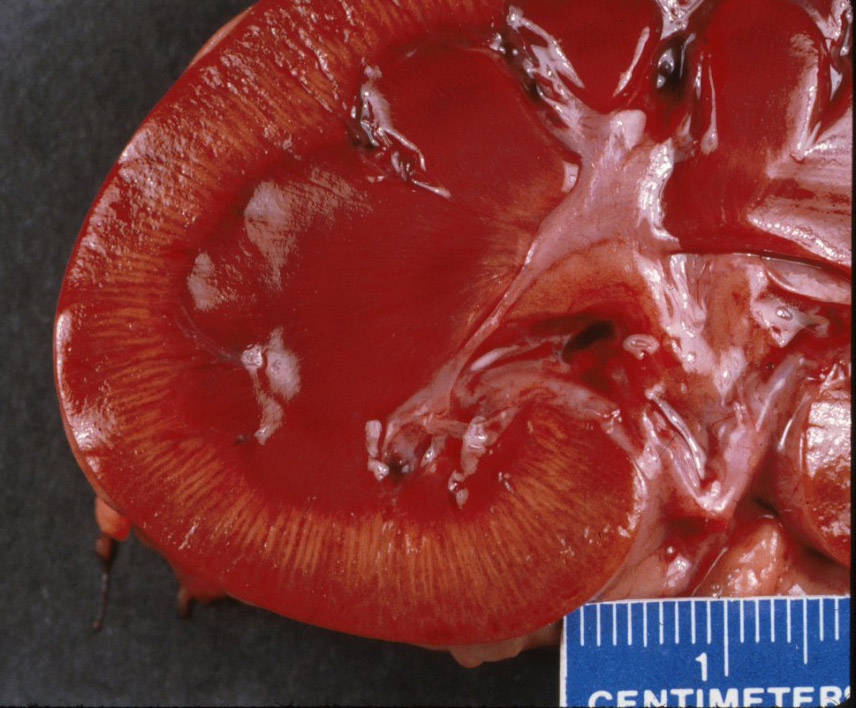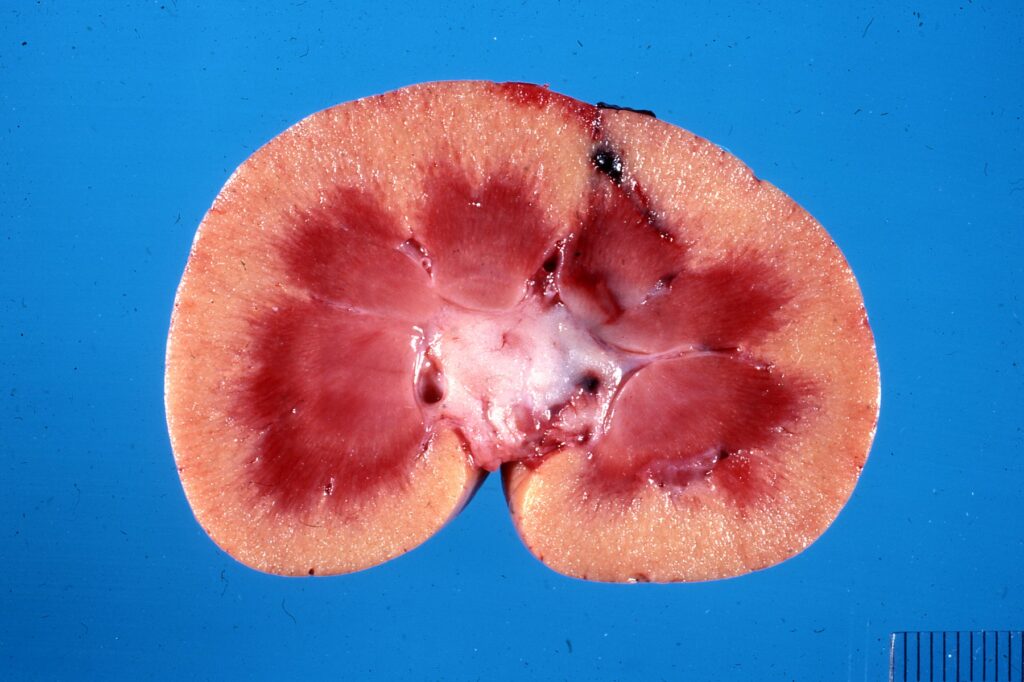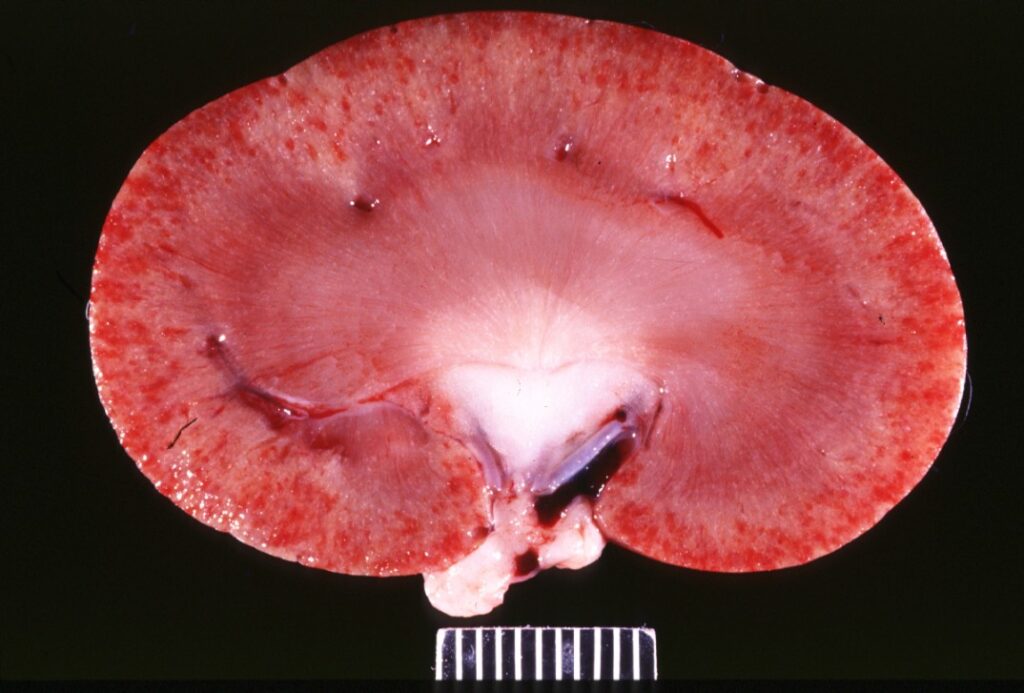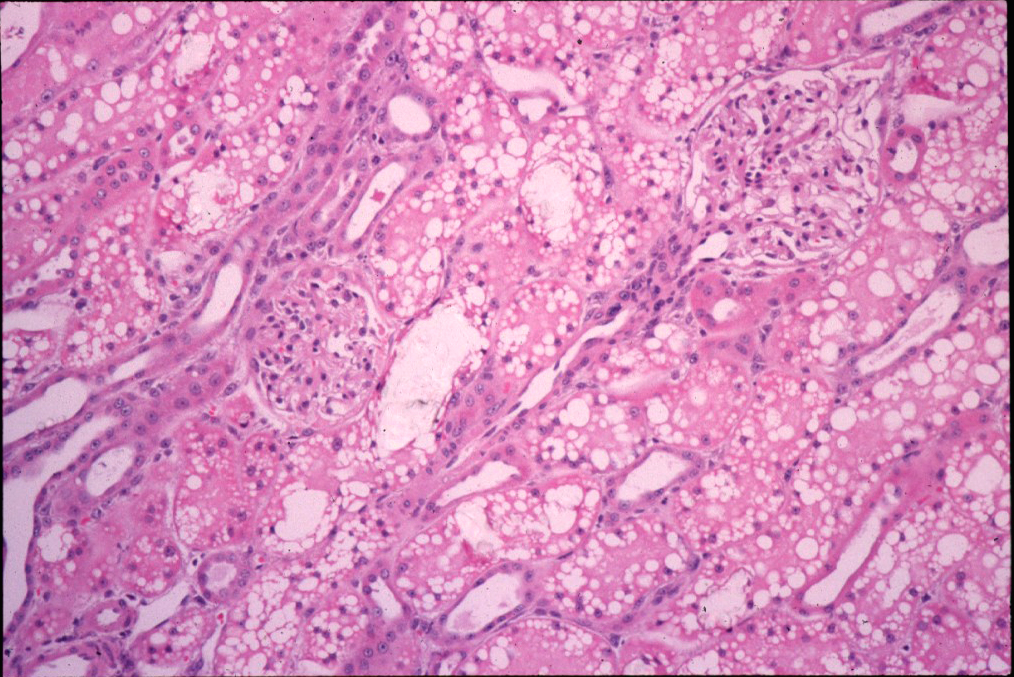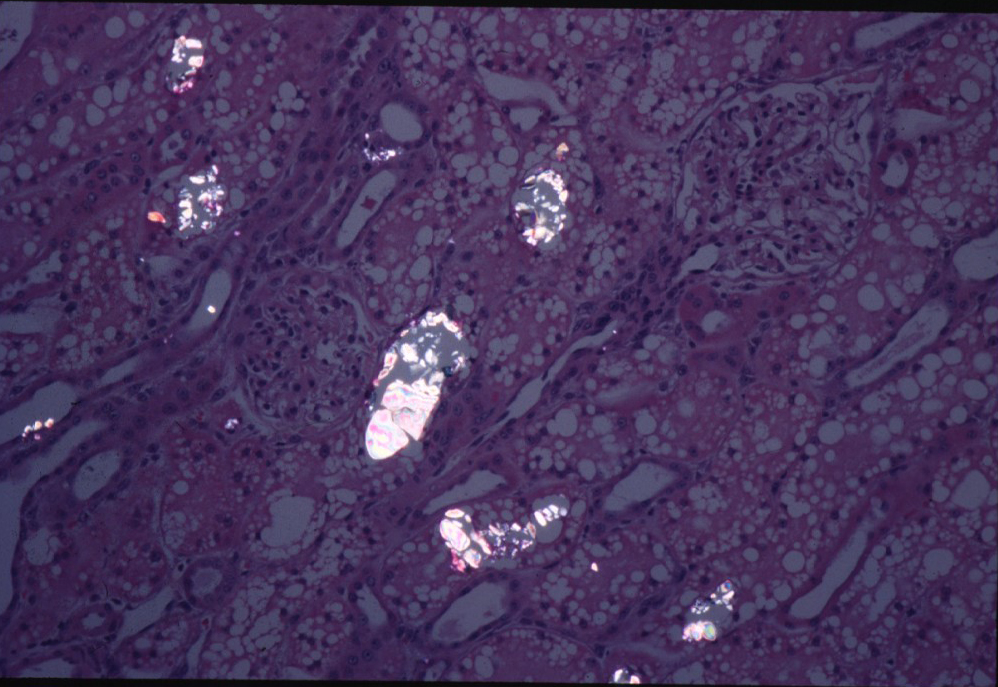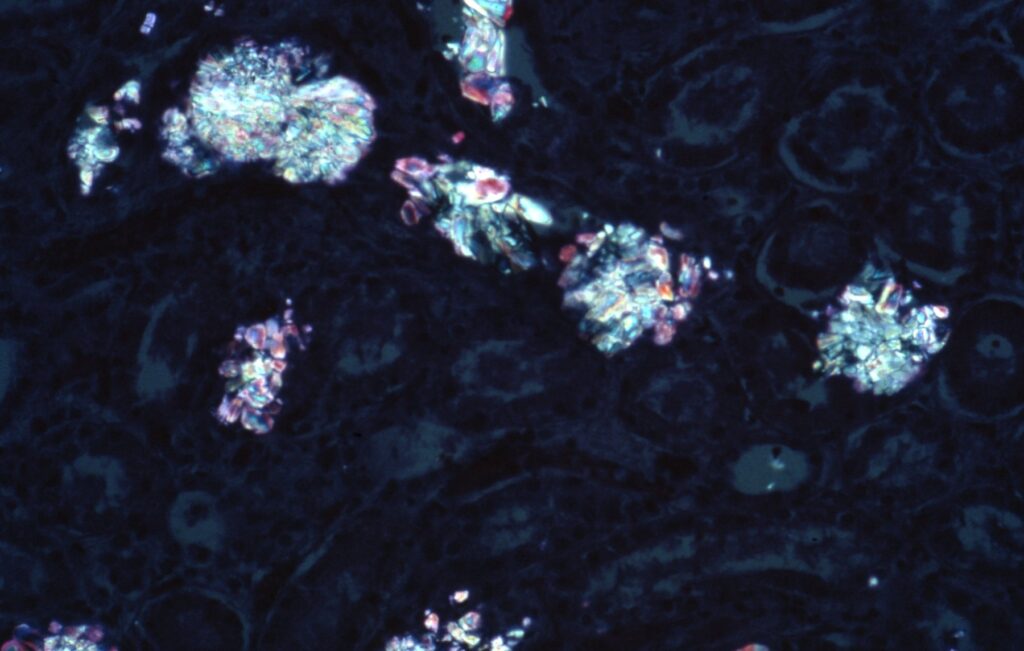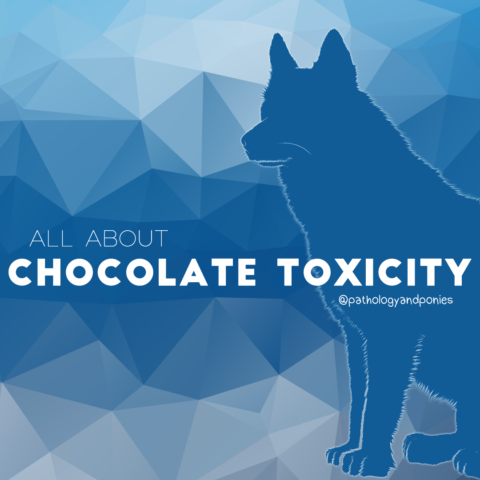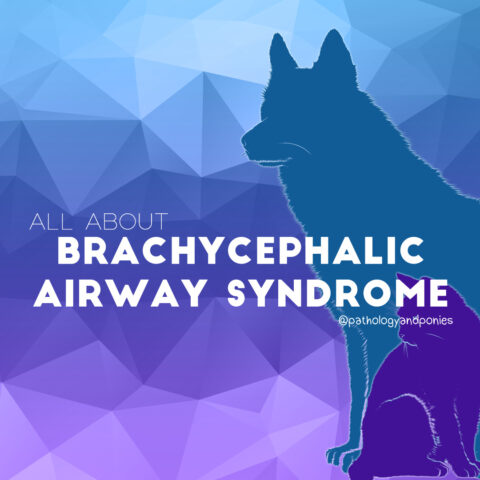Today’s path rounds are on 𝐚𝐧𝐭𝐢𝐟𝐫𝐞𝐞𝐳𝐞 𝐭𝐨𝐱𝐢𝐜𝐢𝐭𝐲!
𝐖𝐡𝐚𝐭 𝐢𝐬 𝐢𝐭?
𝐀𝐧𝐭𝐢𝐟𝐫𝐞𝐞𝐳𝐞 is actually a pretty common toxicity, especially in the spring and fall. Animals will drink antifreeze because it tastes sweet!
𝐖𝐡𝐨 𝐠𝐞𝐭𝐬 𝐢𝐭?
While any species can get this, typically it is seen in dogs and cats.
𝐖𝐡𝐚𝐭 𝐜𝐚𝐮𝐬𝐞𝐬 𝐢𝐭?
Antifreeze contains a compound called 𝐞𝐭𝐡𝐲𝐥𝐞𝐧𝐞 𝐠𝐥𝐲𝐜𝐨𝐥, because it absorbs water. Unfortunately for our pets, this compound is very toxic, and also tastes sweet, which entices them to drink it.
On its own, ethylene glycol is not very toxic, and is usually excreted through the kidneys without causing many issues. However, some of this compound is processed into 𝐠𝐥𝐲𝐜𝐨𝐚𝐥𝐝𝐞𝐡𝐲𝐝𝐞 and 𝐠𝐥𝐲𝐨𝐱𝐲𝐥𝐚𝐭𝐞 in the liver, which are 𝐧𝐞𝐩𝐡𝐫𝐨𝐭𝐨𝐱𝐢𝐜 compounds. This means that they are directly toxic to the tubules in the kidney.
𝐖𝐡𝐲 𝐢𝐬 𝐭𝐡𝐢𝐬 𝐚 𝐩𝐫𝐨𝐛𝐥𝐞𝐦?
When these compounds reach the kidney for excretion, they cause severe damage to the cells. This damage leads to 𝐫𝐞𝐧𝐚𝐥 𝐟𝐚𝐢𝐥𝐮𝐫𝐞. Additionally, these compounds are quite acidic, which can lead to 𝐚𝐭𝐚𝐱𝐢𝐚 (difficulty walking) and depression.
If the animal survives the initial onset of disease, they aren’t quite out of the woods! These compounds can also form 𝐨𝐱𝐚𝐥𝐚𝐭𝐞 𝐜𝐫𝐲𝐬𝐭𝐚𝐥𝐬, which can embed themselves in the kidney tubules and cause further damage. Occasionally, these crystals can also be seen in the brain. Wild!
𝐇𝐨𝐰 𝐢𝐬 𝐢𝐭 𝐝𝐢𝐚𝐠𝐧𝐨𝐬𝐞𝐝?
Typically the veterinarian will start with bloodwork in these cases, which can help them detect the 𝐚𝐜𝐢𝐝𝐨𝐬𝐢𝐬 in the bloodstream from these compounds. From there, they might think to do a 𝐮𝐫𝐢𝐧𝐚𝐥𝐲𝐬𝐢𝐬, where the urine is examined for crystals. Large numbers of oxalate crystals are considered 𝐩𝐚𝐭𝐡𝐨𝐠𝐧𝐨𝐦𝐨𝐧𝐢𝐜 (nothing else it could be) for ethylene glycol toxicity, so if these crystals are seen, the veterinarian can begin treatment.
𝐇𝐨𝐰 𝐢𝐬 𝐢𝐭 𝐭𝐫𝐞𝐚𝐭𝐞𝐝?
Treatment depends on how long it has been since the animal ingested the antifreeze. If caught quickly, the veterinarian will administer medications that bind the toxin to prevent its absorption into the body. If the toxin has already been absorbed, 𝐞𝐭𝐡𝐚𝐧𝐨𝐥 or 𝟒-𝐦𝐞𝐭𝐡𝐲𝐥𝐩𝐲𝐫𝐚𝐳𝐨𝐥𝐞 can be administered to block the liver’s processing of ethylene glycol. If the animal has already entered liver failure, then unfortunately supportive treatment is the only option left. The prognosis for these animals is very poor.
𝐏𝐡𝐨𝐭𝐨𝐬
1-3) Examples of kidneys following ethylene glycol toxicity. If you look carefully at the outer section of the kidney, you can see small granules. These are the oxalate crystals!
4) An example of one of these kidneys under the microscope. Doesn’t look too impressive…
5-6) Until you 𝐩𝐨𝐥𝐚𝐫𝐢𝐳𝐞 the sample! Polarization is when the light particles are aligned to a specific wave, and happens to highlight these crystals. Super cool!
𝐒𝐨𝐮𝐫𝐜𝐞𝐬
Maxie, G. Jubb, Kennedy and Palmer’s Pathology of Domestic Animals, Volume 2. Sixth Edition.
Grauer GF. Overview of Ethylene Glycol Toxicity. Merck Veterinary Manual 2016.
Photos 1-6 © Noah’s Arkive contributors Crowell, Taylor, Jakowski, Peterson licensed under CC BY-SA 4.0.

